Physical Address
304 North Cardinal St.
Dorchester Center, MA 02124
Syphilis is a cause of stromal keratitis.
Syphilitic keratitis is often bilateral in children with late congenital syphilis but unilateral in adults with late latent syphilis.
Corneal opacification with neovascularization, iridoschisis, and secondary glaucoma are possible consequences.
Diagnostic testing involves a treponemal serologic test such as Treponema pallidum particle agglutination (TPPA).
Ophthalmic signs of syphilis were spotted in the early 16th century when the pox first plagued Europe, but syphilitic keratitis was overlooked until 1858 when Hutchinson first described stromal keratitis in children and adolescents who had abnormal teeth, deafness, and other characteristics of congenital syphilis. , By the early 20th century stromal keratitis became accepted as nearly pathognomonic evidence of late congenital syphilis. A few decades after the initial account of stromal keratitis due to acquired syphilis in 1873, cumulative reports of adult-onset syphilis comprised about 5% of syphilitic keratitis. At metropolitan eye centers ocular syphilis could be diagnosed in 0.5% of patients of whom 20% or more had corneal disease ( Fig. 84.1 ) that left 5% visually disabled.
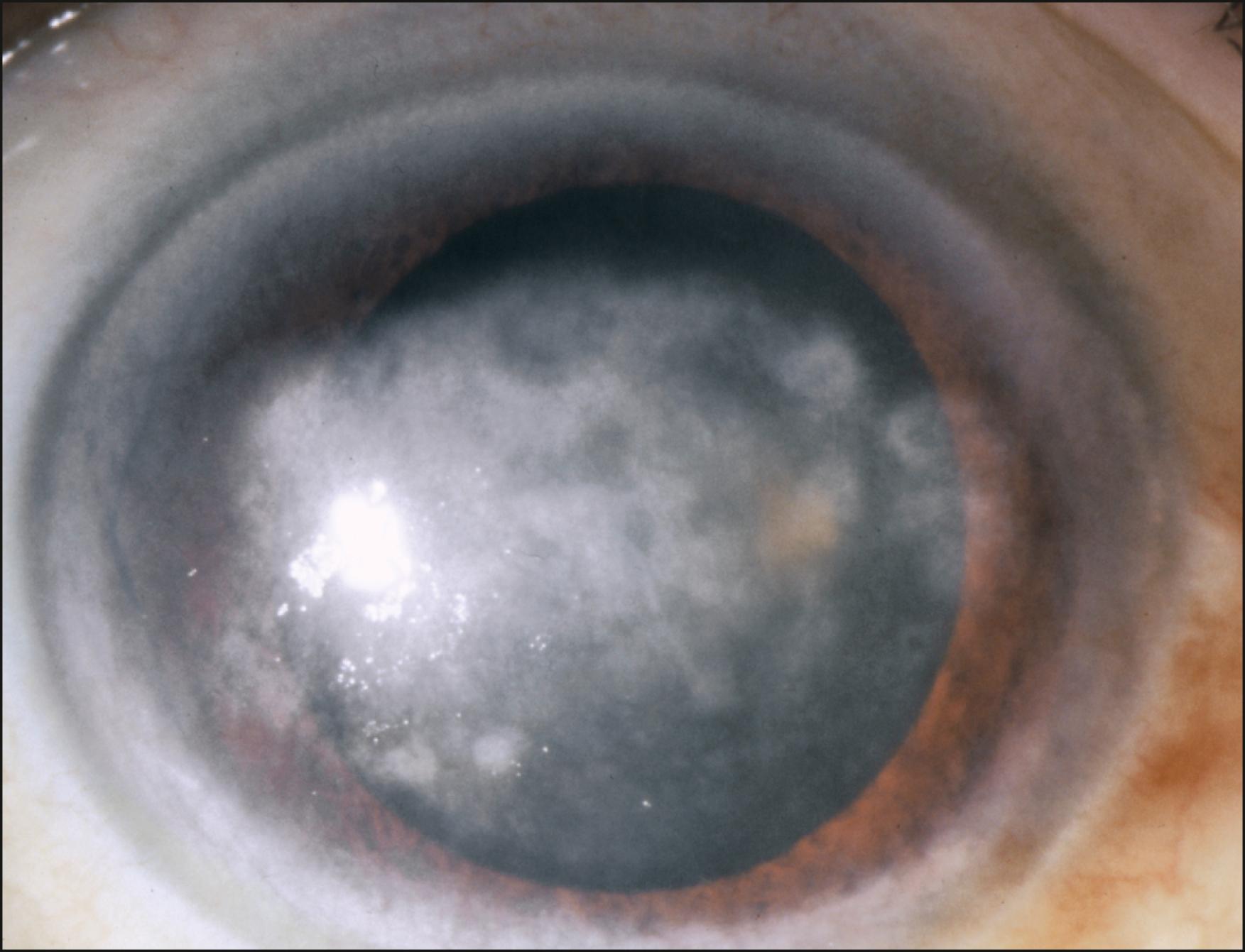
Penicillin was introduced in 1944 for expectant mothers to forestall congenital syphilis and proved effective at preventing syphilitic keratitis. Antibiotics reduced mother-to-child transmission and slowed the spread of sexually transmitted disease, but penicillin was as disappointing as its mercurial predecessors at treating syphilitic corneal inflammation. Cortisone transformed management after 1950. Topical corticosteroids shortened the course of syphilitic keratitis and improved visual outcomes. ,
Syphilis plummeted from about 50% of all stromal keratitis cases in the late 19th century to less than 1% by the early 21st century. - During the 20th century stromal keratitis fell to less than 1% of the eye manifestations of syphilis. Consequently, syphilis, once a leading cause of corneal blindness that had been managed by keratoplasty since 1914, dwindled as a preoperative diagnosis among corneal graft recipients from 10% of corneal transplants in 1950 to fewer than 1% a half century later, , leading the Eye Bank Association of America to rescind syphilitic keratitis/keratopathy as a separate indication in 2002.
Yet syphilis as a cause of corneal disease persists. Globally, 18 million people have syphilis, including over 1 million pregnant women of sub-Saharan Africa. An incidence of 10,000 to 30,000 cases of syphilitic keratitis is imputed to occur annually, notably in communities lacking prenatal screening and adequate access to health care. The estimated worldwide prevalence of residual syphilitic keratopathy ranges from 100,000 to 1 million persons.
Corneal invasion by Treponema pallidum follows topical, subconjunctival, intrastromal, and intracameral administration in experimental animals. Clinically, however, corneal involvement rarely comes about during primary syphilis except for an unusual chancre on the eyelid or conjunctiva following an oculogenital or oculo-oral encounter. T. pallidum can reach the eye during bloodborne dissemination of secondary acquired syphilis or early congenital syphilis. Treponemes prefer body sites at a lower temperature such as the anterior segment and could feasibly squirm into the peripheral cornea during bloodborne dissemination ( Fig. 84.2 ). , Despite these possible scenarios, syphilitic keratitis does not usually happen during the early stages of syphilis but rather is delayed for about a decade after exposure.
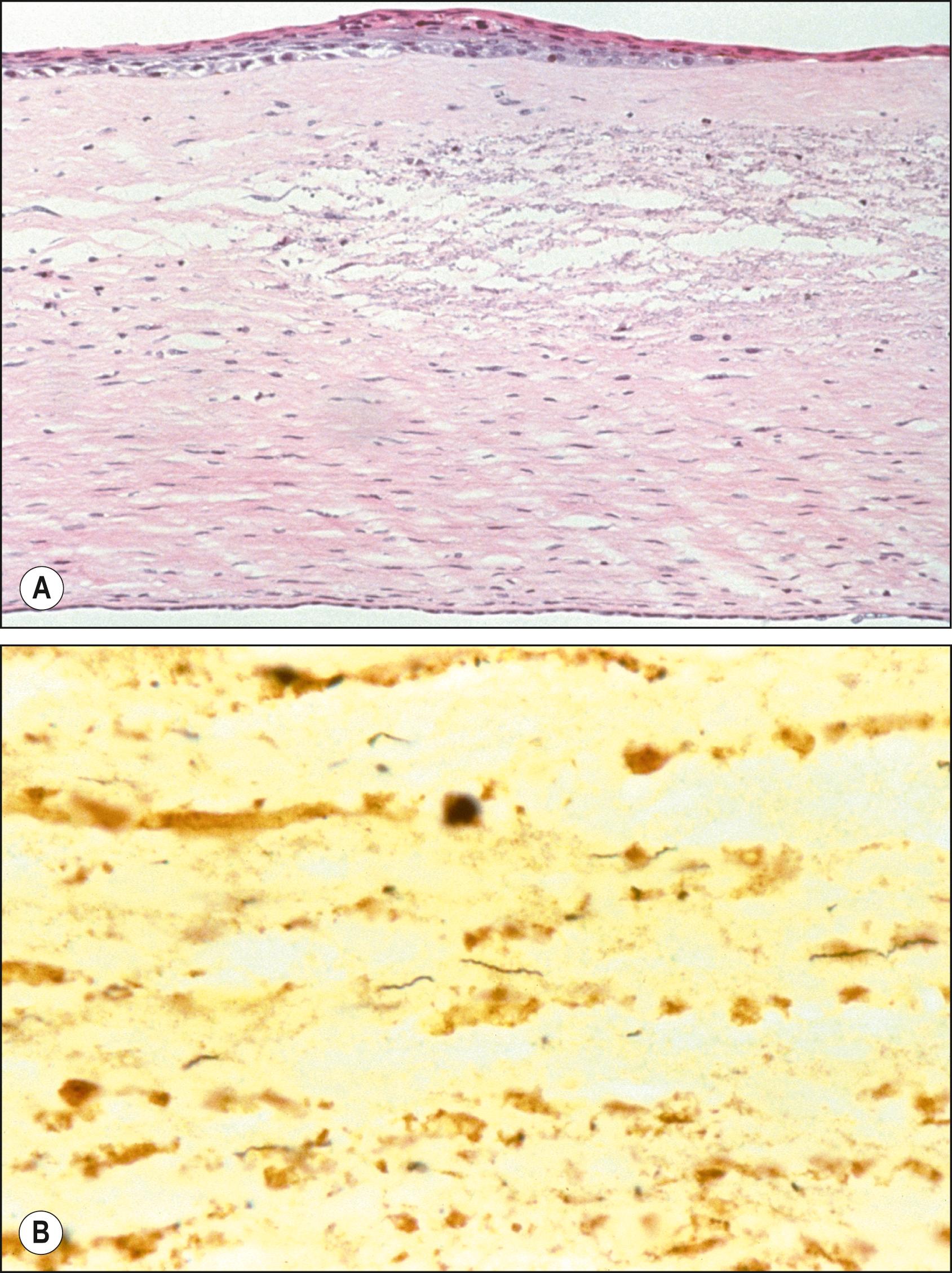
T. pallidum might survive in protected niches like the eye, but viable treponemes probably do not subsist indefinitely in the corneal stroma as once believed. Molecular analysis has not confirmed treponemal components in the cornea. Systemic penicillin does not cure inflammatory manifestations of late congenital syphilis such as stromal keratitis, acute hearing loss, and synovitis, whereas corticosteroids are beneficial. Furthermore, donor-to-host transmission of syphilis does not follow corneal transplantation, notwithstanding exclusion of syphilitic donors and loss of infectivity by T. pallidum during corneal preservation.
If syphilitic keratitis is not an infection, then what is the impetus to corneal immunity? Studies of causality are inconclusive. Plausible mechanisms are unmasking of sequestered treponemal lipoproteins or glycolipids within the eye that activate T cells, an immune response against cardiolipin that cross-reacts with corneal phospholipids, and molecular mimicry between treponemal antigens and human epitopes that induces an autoimmune reaction in the cornea. The immunopathogenesis of syphilitic keratitis likely parallels processes responsible for Cogan syndrome and for stromal keratitis rarely occurring during nonsyphilitic spirochetoses—namely yaws, Lyme disease, tick-borne relapsing fever, and leptospirosis.
Stromal keratitis during late congenital syphilis typically occurs between 6 and 16 years of age, hardly ever before age 2. The median age is close to puberty at 12 years of age when more girls are affected than boys, then risk tapers through adolescence and young adulthood. Ocular trauma or surgery might provoke an occasional incident.
Approximately 50% of patients with syphilitic keratitis have earmarks of congenital syphilis ( Box 84.1 ), most often misshapen and defective teeth. Additional findings are perioral furrows, nasal or cranial deformity, and curved shins. At times, acute knee effusion antecedes or coincides with syphilitic keratitis.
Dry, wrinkly skin
Radiating fissures at mouth corners (rhagades) or outer canthi (crow’s feet)
Notched or tapered upper central incisors (Hutchinson teeth)
Small or widely spaced teeth prone to caries
Malformed first molars with domed shape (Moon molars) or mulberry cusps (Fournier molars)
Frontal bossing, sloping forehead, and supraorbital thickening
Short maxilla with midfacial concavity
High-arched or perforated palate
Prominent mandible (bulldog jaw)
Flattened nasal bridge (saddle-nose deformity)
Sternoclavicular thickening (Higoumenakis sign)
Winged scapula
Thickening and anterior bowing of tibia (saber shin)
Radiographic abnormalities of long bones (Wimberger sign)
Syphilitic keratitis has a proclivity to originate in the superior cornea ( Fig. 84.3 ). Peripheral haze and swollen endothelial cells are tip-offs to impending nonulcerative stromal keratitis. Inflammatory edema may remain localized or burgeon into irregularly diffuse infiltration that is synonymously termed immune stromal keratitis, interstitial keratitis, and parenchymatous keratitis.
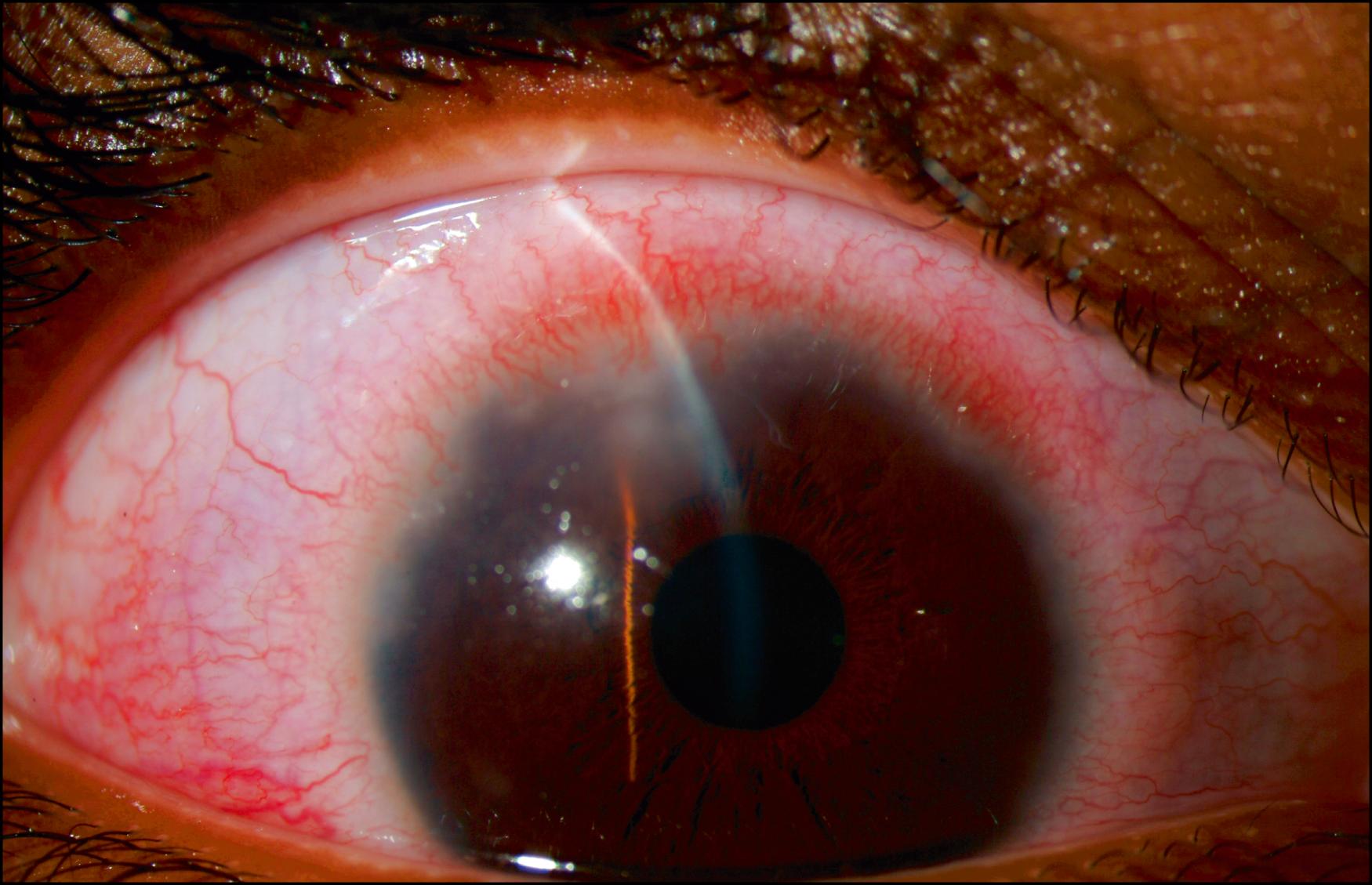
T-cells, monocytes, and a few plasma cells enter the stroma and dapple the endothelium. Multiple nummular or spindly infiltrates that form between lamellae coalesce and extend centrally and posteriorly. Curvilinear opacification is an odd phenomenon designated, depending on shape and advancement, keratitis annularis or keratitis linearis migrans. Macrophages aggregating around necrotic keratocytes in the deeper stroma constitute a granulomatous reaction once called keratitis profunda that may cohere into milky smudges or creep along Descemet membrane to crumple the posterior cornea.
Endothelial dysfunction, foreshadowed by pseudoguttae, may lead to a corneal thickness of 600 μm or more. Microcystic epithelial edema may progress to subepithelial bullae. Edematous wrinkling of the deep stroma and Descemet membrane creates striate, stellate, circinate, or crisscrossing folds. Frosty corneal edema with blunted sensation resembles the avascular, ground-glass cornea of disciform endotheliitis.
New vessels invade the cornea within days to weeks. Superficial capillaries bud from venules of the limbal arcades, and deeper blood vessels emanate from the episcleral circle of anterior ciliary vessels. Lymphatic vessels sprout from the conjunctival plexus into the peripheral cornea. These vascular tufts insinuate between stromal lamellae and head for the turbid zone, elongating 1 mm per week without treatment. Ambient clearing makes ingrowing vessels appear to sweep an infiltrate onward.
Stromal blood vessels and lymphatics may stream in a fascicular bundle or intrude radially from centripetal directions ( Fig. 84.4 ). Germinating vessels tend to stay in a lamellar plane unless stromal necrosis or disorganization deflects their path. New arterioles may exude a perivascular cuff. A rosy pannus of interknit vessels tinges the cornea with a salmon-colored patch, while deeper vessels empurple the stroma into a plum-colored eye. At times, a capillary bleeds into the stroma. As inflammation, neovascularization, and lymphangiogenesis intensify, the cornea flushes a livid red that blends into pericorneal ciliary flush.
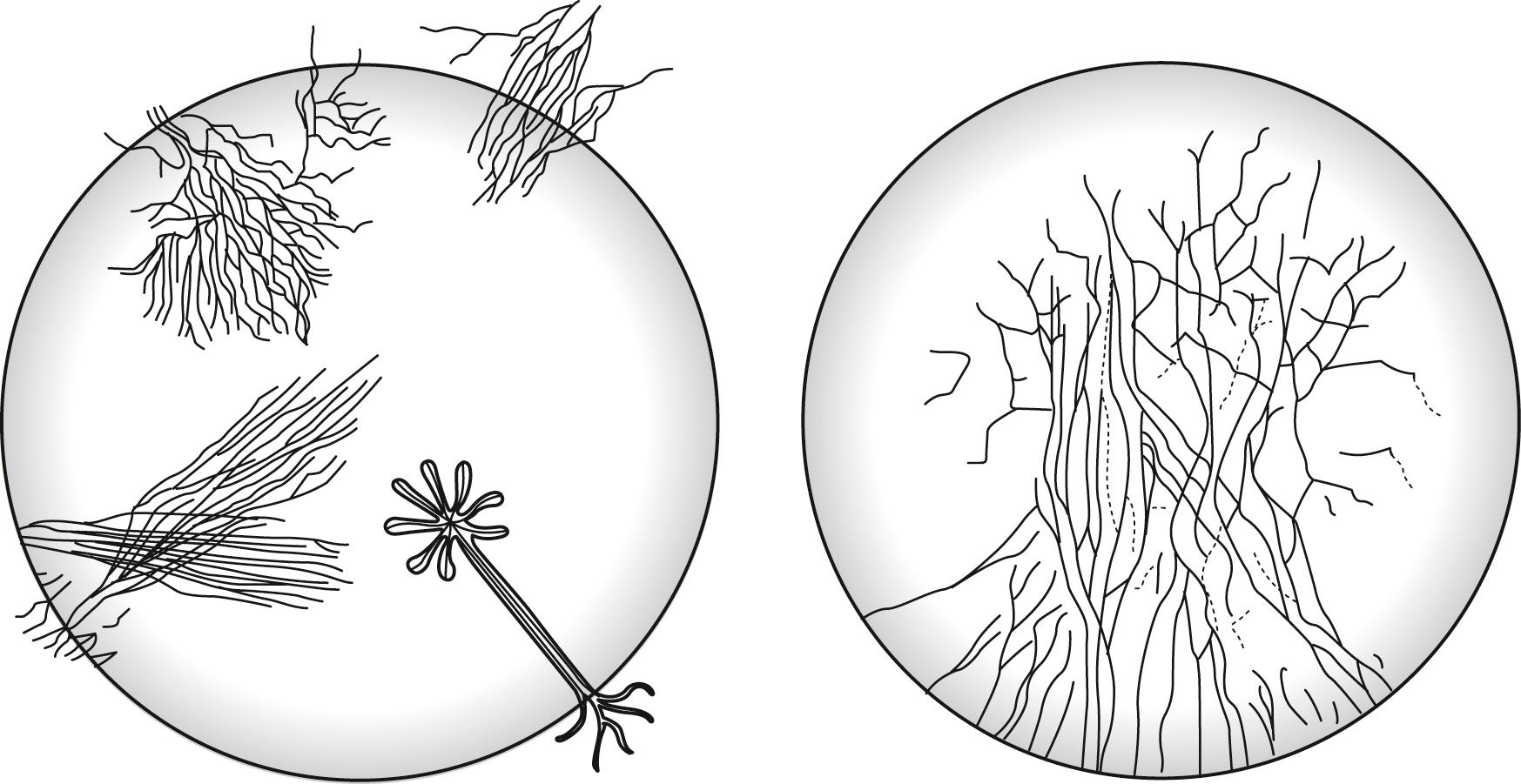
The extent of neovascularization depends on the amplitude of leukocytic infiltration and on the use of antiinflammatory drugs and angiogenic inhibitors. Without corticosteroid treatment, a neovascular fretwork takes shape over 6 weeks, ultimately peaking in a florid irruption that can smolder for weeks or months before inflammation subsides and vessels wither.
Both eyes become inflamed in 80% of children and adolescents with late congenital syphilis who develop stromal keratitis. Contralateral inflammation can be almost synchronous with the first eye but more often commences a few weeks later, within 3 months in 75% of cases ( Fig. 84.5 ). Over time the opposite eye is less likely to be affected, although delays beyond 5 years are recorded.
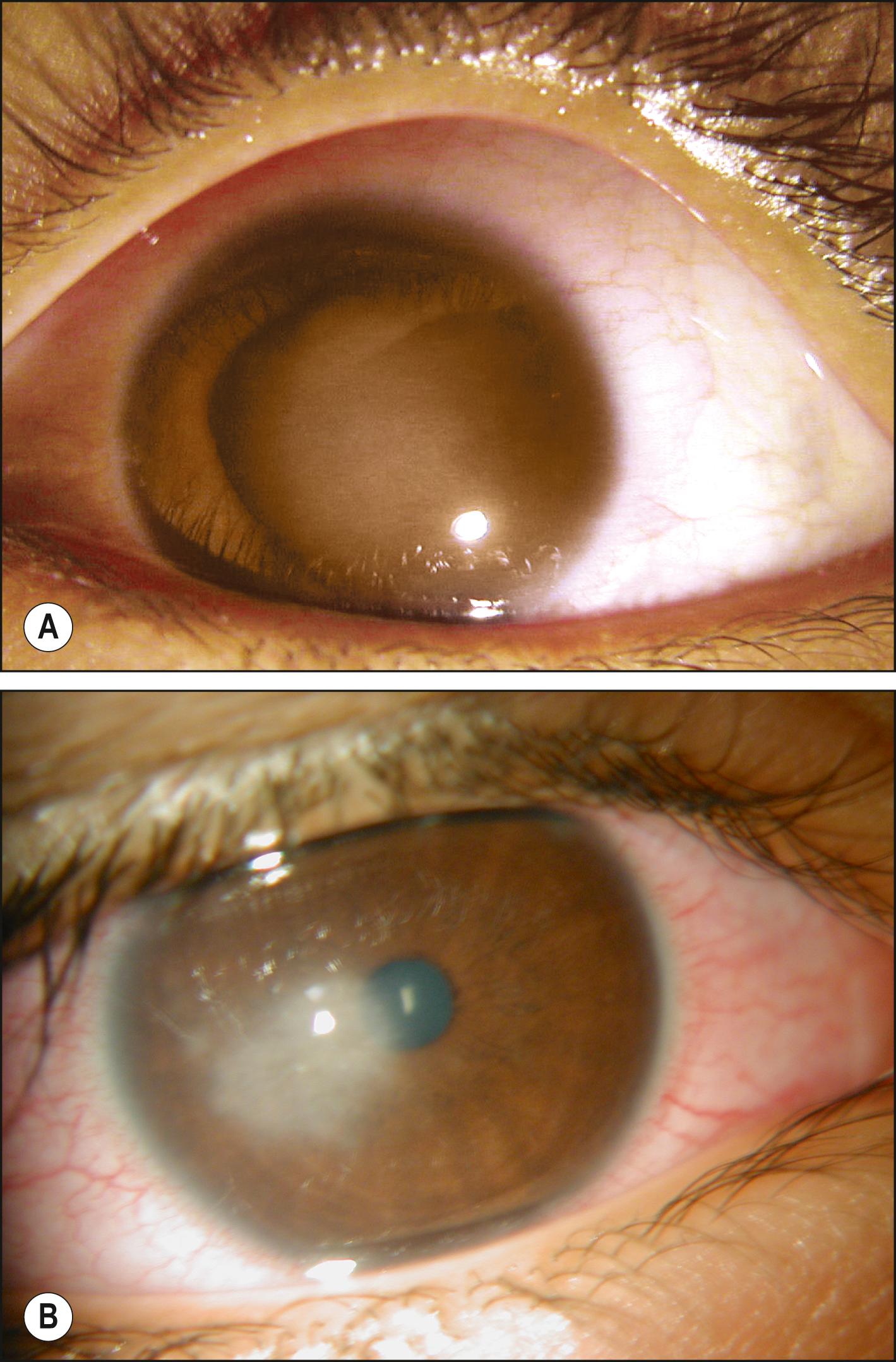
Become a Clinical Tree membership for Full access and enjoy Unlimited articles
If you are a member. Log in here